Type 63. Chinese view of armored personnel carriers
Combat buses. Type 63 (the factory designation of the YW531 model) was the first Chinese armored personnel carrier, which was developed independently without Soviet help and without regard to Soviet models of military equipment. The new combat vehicle was put into operation at the end of the 1960 years and is still in service with the PLA. The machine, which is a kind of Chinese analogue of the American tracked armored personnel carrier M113, turned out to be quite successful. On the basis of the Type 63 BTR, many models of special combat vehicles were created, including self-propelled 120-mm mortars, 130-mm MLRS and 122-mm self-propelled howitzers.
It is believed that for the entire time of serial production by a large Chinese industrial corporation Norinco, approximately 8 thousand Type 63 armored personnel carriers of all modifications were produced. The armored personnel carrier was actively exported. This combat vehicle was used by the armed forces of the DPRK, Albania, Iraq, Sudan, Vietnam and other states. In many countries, the Type 63 APC is still in service. Like many samples of military equipment of the second half of the 20th century, the Chinese tracked floating APC Type 63 managed to take part in a number of wars and local conflicts, including the Vietnam War, the Sino-Vietnam War, the Iran-Iraq War, and the first Persian Gulf War.
The history of the creation of the Type 63 armored personnel carrier
Before developing their own APCs, the Chinese military actively used Soviet combat vehicles, their licensed copies, as well as adapting Soviet equipment with minor modifications of their own. So since 1956, the PLA has been armed with a six-wheeled Type 56 armored personnel carrier, which was a licensed copy of the Soviet BTR-152. In addition, the Chinese military had a tracked armored personnel carrier based on a light floating tank, an exact copy of the Soviet PT-76. The armored personnel carrier itself, which received the designation Type 66, almost completely repeated the Soviet tracked floating BTR-50P.
It is worth noting that for a long time the Chinese were engaged in what they are perfectly able to do today. Produced under license and copied other people's samples of military equipment, as well as made changes to them and modernized during operation. In this regard, the creation of the Type 63 armored personnel carrier, which did not rely on Soviet developments, is a very interesting example from stories Chinese defense industry. The combat vehicle created in China in the 1960 years received a simple design and was comparable with armored vehicles of this class from other countries, for example, with the American main armored personnel carrier M113.
As early as July 1958, the Chinese government proclaimed a new strategic national plan for scientific development, which also provided for the creation of new models of armored vehicles, including tracked armored personnel carriers. Initially, it was planned to finish the work on creating such a machine already in the 1960 year, but in reality the development time was very long. To create a new armored personnel carrier, the design bureau of the northern machine-building plant was involved, which later became part of the Norinco corporation - one of the largest manufacturers of Chinese weapons.
Since the model of the new BTR was created by Chinese designers practically from scratch, the creation process dragged on, the project continued until the 1967 of the year. Despite the originality of the model, many elements had to be borrowed from Soviet counterparts. This was especially true of the chassis, in the construction of which Chinese engineers used elements of the Soviet amphibious tank PT-76 (Type 60) and the floating tracked armored vehicle BTR-50P (Type 66). The Chinese borrowed torsion bar assemblies from the Soviet models, the technology for the production of road wheels and even tracked tracks. The power plant was also difficult to call original, since the well-proven V-diesel engine, the famous B-2, which was also installed on the T-34-85 tanks and its Chinese counterpart, Type 58, was taken as the basis. The water cooling engine, which received the designation 6150L, differed from the tank in the reduced number of cylinders - 8 instead of 12, as a result, the diesel engine had less power, which was quite enough for an armored personnel carrier.
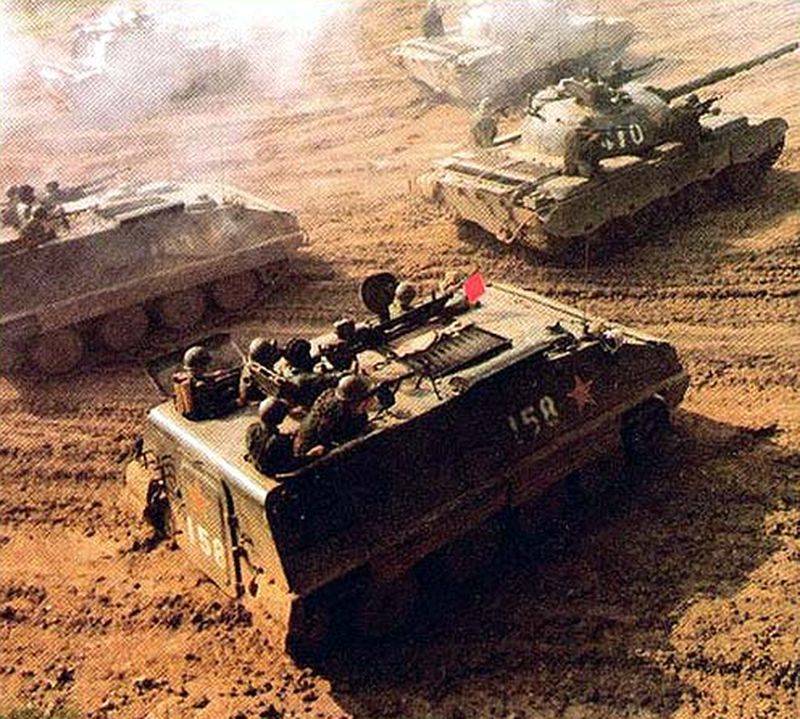
In the process of creation, the concept and layout of the machine changed several times, until in 1963, the Chinese designers settled on the option that later went into mass production. Then the machine was first assigned the Type 63 index. The main changes concerned the layout. The Chinese have come to a decision that is characteristic of most manufacturers of such equipment. The engine compartment was moved closer to the middle of the armored personnel carrier on the right side. This was necessary to make the location of the power plant and transmission more rational and to provide paratroopers with the opportunity to exit through the aft door. Then it was decided to strengthen the armament of the armored personnel carrier, replacing the 7,62-mm machine gun with a large-caliber machine gun. The first prototypes in the new layout were presented in the 1964 year, but their refinement continued for quite some time. Still, the lack of experience of Chinese designers affected. The serial production of the Type 63 tracked armored personnel carrier was only launched at the end of the 1960's, and the first public demonstration took place in the 1967 year when an armored personnel carrier took part in a military parade in Beijing.
Technical features of the Type 63 BTR
The body of the new combat vehicle was made of rolled armored plates by welding. The maximum thickness of the armor plates in the bow of the hull reached 14 mm, the sides and stern were weaker protected - only 6 mm. The front of the APC had a wedge-shaped shape, while the upper armor plate was installed at a large angle, gradually moving into the roof of the hull, which was slightly raised closer to the stern for the convenience of finding the landing. The lower armor plate was installed at a much smaller angle. The sides of the body of the Type 63 armored personnel carrier also could not boast of large angles of inclination, the aft armor plate was completely installed vertically. Such a reservation provided the machine with protection only against small arms fire of the 7,62-mm caliber and small fragments of shells and mines. The advantages of a combat vehicle, which were supposed to improve its survival in battle, include low altitude. The maximum height of the combat vehicle on the roof of the hull did not exceed 1,9 meters (excluding the machine gun), which made it possible to effectively hide in the folds of the terrain, bushes and use the terrain.
The layout scheme was traditional for armored personnel carriers of the time with a number of nuances. In the front of the hull there were places of the driver (on the left side) and the commander of the machine (on the right side), each of them had its own hatch to climb inside or leave the fighting vehicle, while the commander's place was isolated from the living space of the machine. Immediately after the driver’s place in the center of the hull there was a gunner’s place, which also had its own hatch. Directly on the roof of the hull next to the gunner’s hatch was a heavy machine gun. Behind the commander's seat, an engine was installed, isolated from the inhabited space of the machine by armored partitions. The transmission was located in the bow of the case, access to it was provided through a removable armor plate located in the upper frontal part of the case. The entire aft part of the combat vehicle was occupied by the airborne squad, designed to transport up to 10-13 infantry, including the gunner. In total, the machine transported 12-15 people, including two crew members. There were two large hatches for landing and disembarking motorized rifles in the roof of the hull, but the aft door was the main means of exit. On the sides of the hull and door there were loopholes for firing from personal weapons.
The power plant on the first BTR models with the A and B index was presented by a stripped-down version of the B-2 tank diesel engine developing 260 horsepower. This was enough to accelerate an armored personnel carrier with an 12,5 tonne of combat weight to a speed of 65 km / h when driving on a highway; off-road the vehicle could accelerate to 45 km / h. Quite good performance for armored vehicles of those years. The diesel 8 cylinder engine was paired with a manual gearbox (4 + 1). The car was originally thought to be floating, so it got a sealed enclosure. The movement on the water was carried out by rewinding the tracks, the maximum speed on the water surface did not exceed 6 km / h. Cruising on the highway was approximately 500 km. On armored personnel carriers, starting with version C, as well as on export vehicles, a more powerful German air-cooled diesel engine, KHD BF8L, which produced 320 hp was installed.
The chassis of the Type 63 armored personnel carrier was represented by four rubber single-track track rollers on each side, there were no supporting rollers. The drive wheel was installed in front. The machine received an individual torsion bar suspension, while only the first rollers were sprung. The upper branch of the BTR caterpillar was covered by a bulwark consisting of four sections. On bulwarks there was a characteristic stamping, which is also one of the well-recognized elements of an armored personnel carrier.
The main armament of the combat vehicle was a large-caliber 12,7-mm machine gun, which is a Chinese copy of the Soviet DShKM. To the machine gun there were 500 cartridges equipped with tapes stored inside the amphibious compartment of the BTR “Type 63”. Initially, the position of the machine gunner was completely open, but already in the 1980 years, when all armored personnel carriers underwent another modernization, the gunner was protected by a turret with armored plates covering it on three sides. For firing at the enemy, motorized rifles could use their personal weapons, firing from closing loopholes or large hatches located in the roof of the hull.
The first experience of creating its own armored personnel carrier turned out to be quite successful for China. The combat vehicle created in the 1960 years, like the American M113 armored personnel carrier, is still in service. The exact release numbers are not known, but according to information from open sources in the PRC, they collected at least 8 of thousands of similar tracked armored personnel carriers, which were also actively exported, having survived a large number of upgrades.
OT-64 SKOT. Armored personnel carrier that surpassed the BTR-60
M113. The most massive armored personnel carrier in history
BTR-50P. By land and by water
A real combat bus. BTR-152
BTR-40. The first Soviet serial armored personnel carrier
The most massive armored personnel carrier of World War II
The main armored personnel carrier of the Wehrmacht. Sd.Kfz. 251 Ganomage
The first armored personnel carrier from Scandinavia. Terrangbil m / 42 KP
Armored personnel carrier from "Sherman"
Light multipurpose armored personnel carrier Universal Carrier
The first armored personnel carrier in history. Mark ix
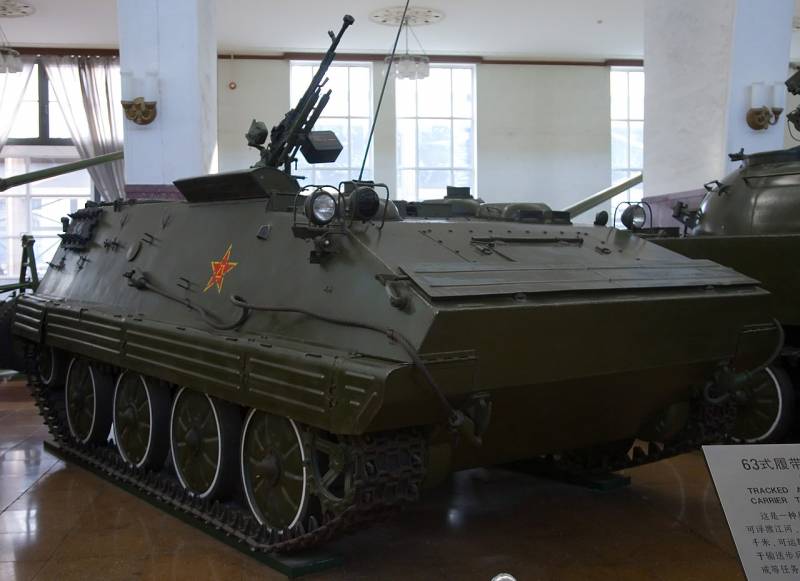
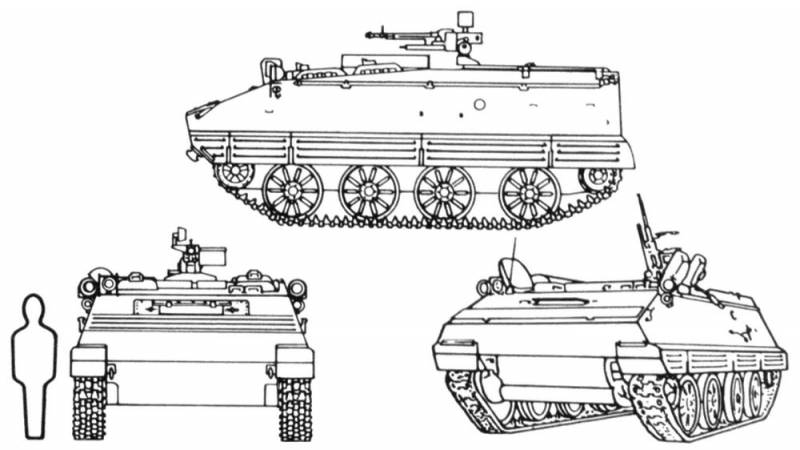
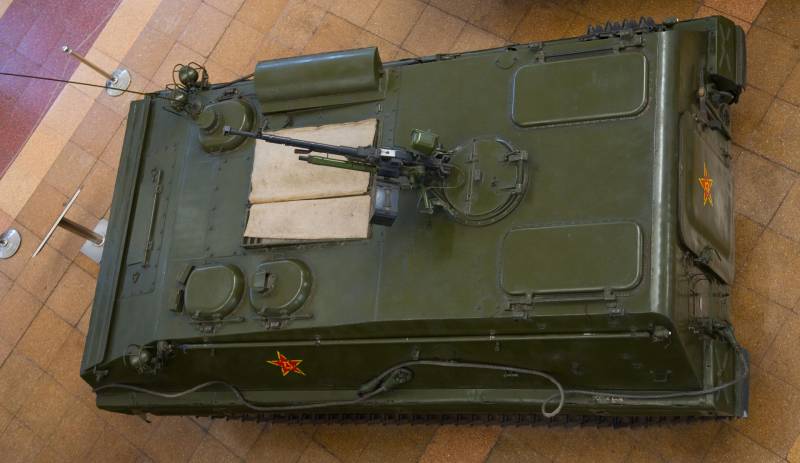
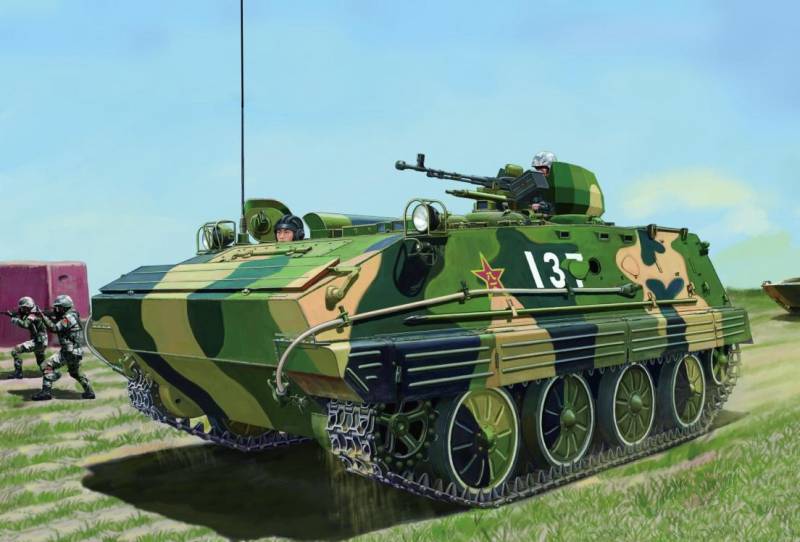
Information